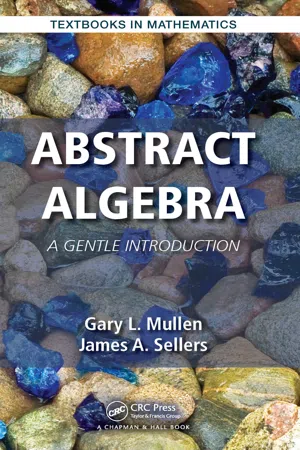
- 204 pages
- English
- ePUB (mobile friendly)
- Available on iOS & Android
About This Book
Abstract Algebra: A Gentle Introduction advantages a trend in mathematics textbook publishing towards smaller, less expensive and brief introductions to primary courses. The authors move away from the 'everything for everyone' approach so common in textbooks. Instead, they provide the reader with coverage of numerous algebraic topics to cover the most important areas of abstract algebra.
Through a careful selection of topics, supported by interesting applications, the authors Intend the book to be used for a one-semester course in abstract algebra. It is suitable for an introductory course in for mathematics majors. The text is also very suitable for education majors
who need to have an introduction to the topic.
As textbooks go through various editions and authors employ the suggestions of numerous well-intentioned reviewers, these book become larger and larger and subsequently more expensive. This book is meant to counter that process. Here students are given a "gentle introduction, " meant to provide enough for a course, yet also enough to encourage them toward future study of the topic.
Features
- Groups before rings approach
- Interesting modern applications
- Appendix includes mathematical induction, the well-ordering principle, sets, functions, permutations, matrices, and complex nubers.
- Numerous exercises at the end of each section
- Chapter "Hint and Partial Solutions" offers built in solutions manual
Frequently asked questions
Information
Chapter 1
Elementary Number Theory
1.1 Divisibility
- (i) If d|a and d|b, then d|(a + b);
- (ii) If d|a and d|b, then d|(a − b);
- (iii) If d|a and d|b, then d|(ma + nb) for any integers m and n;
- (iv) If m|d and d|a, then m|a.
Table of contents
- Cover
- Half Title
- Title Page
- Copyright Page
- Table of Contents
- Preface
- 1 Elementary Number Theory
- 2 Groups
- 3 Rings
- 4 Fields
- 5 Finite Fields
- 6 Vector Spaces
- 7 Polynomials
- 8 Linear Codes
- 9 Appendix
- 10 Hints and Partial Solutions to Selected Exercises
- Bibliography
- Index